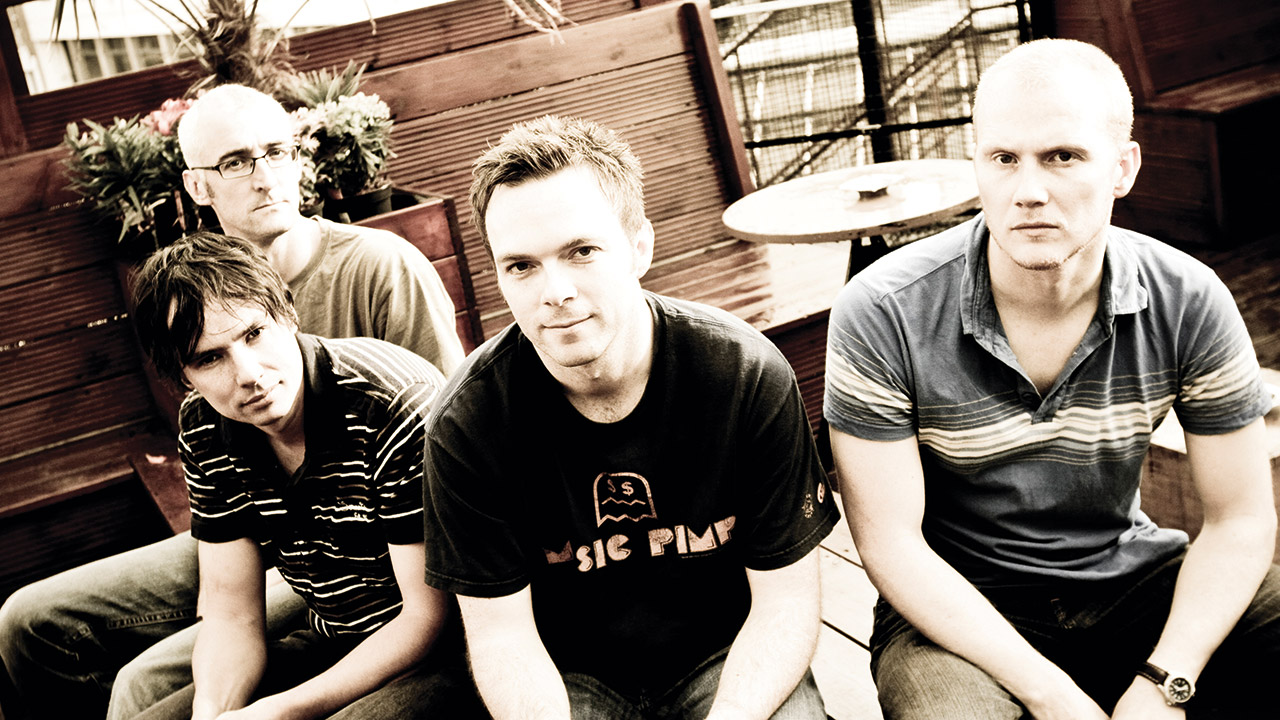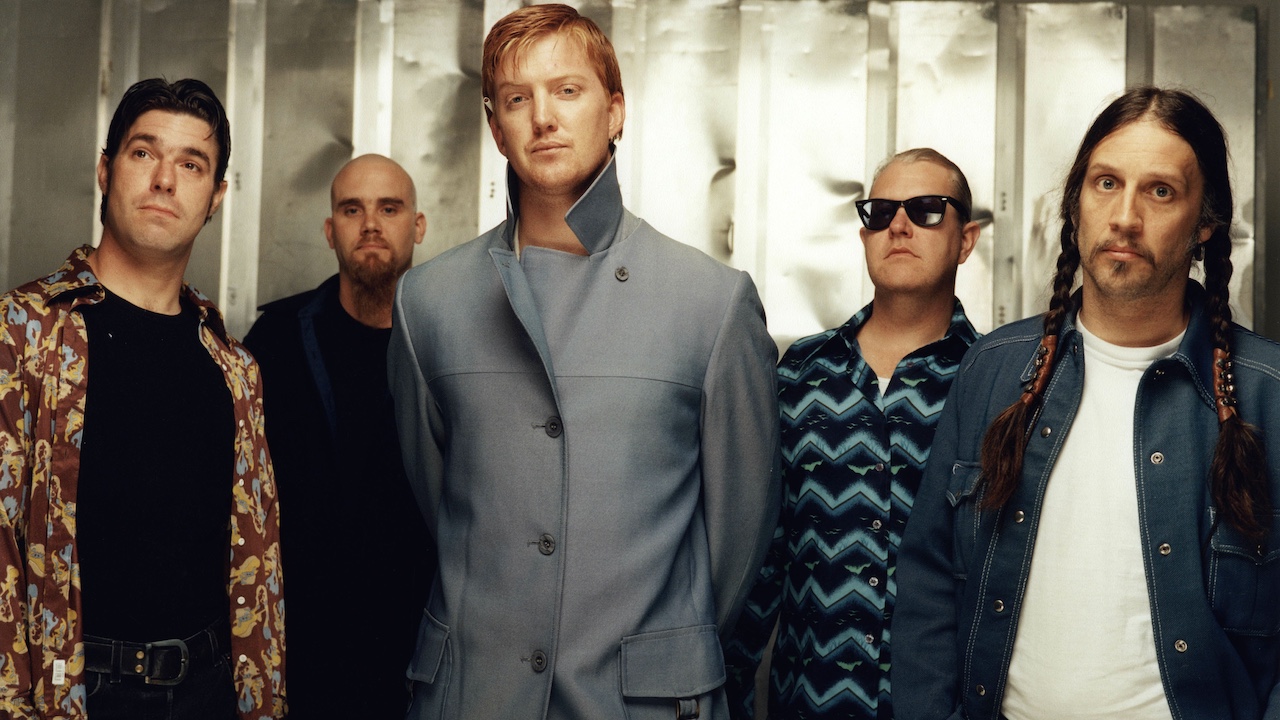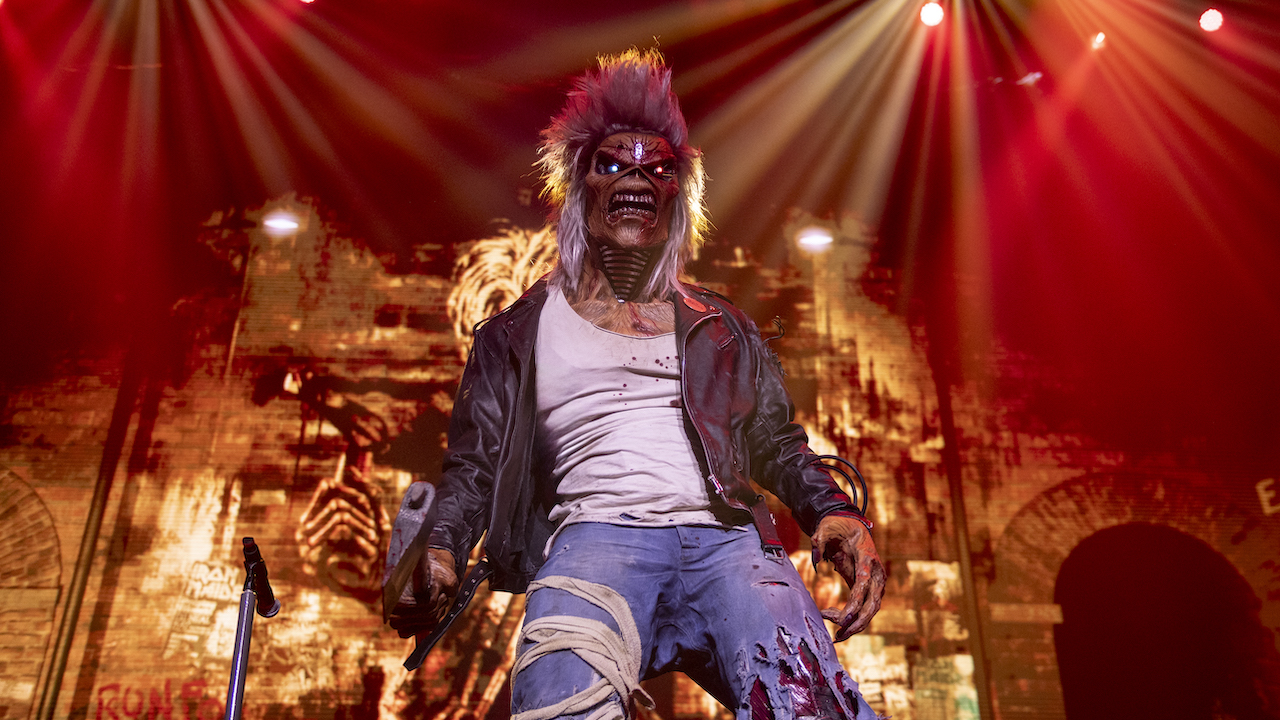
Feature Photo: Modifications made by Dcameron814., Public domain, via Wikimedia Commons
Rising from a chance encounter in Los Angeles traffic, Buffalo Springfield blazed through the music world like their steamroller namesake, forever changing the landscape of American rock music. Buffalo Springfield was a Canadian-American rock band formed in Los Angeles in 1966 by Canadians Neil Young, Bruce Palmer and Dewey Martin and Americans Stephen Stills and Richie Furay. Despite their brief existence from 1966 to 1968, the band’s influence on folk rock, country rock, and the broader California sound cannot be overstated. Their music combined elements of folk music and country music with influences from the British Invasion and psychedelic rock, establishing them as key pioneers in the early development of folk rock alongside contemporary bands like the Byrds.
The band took their name from a steamroller parked outside their house, manufactured by the Buffalo-Springfield Roller Company, reflecting the straightforward, working-class sensibilities that would characterize their music. Buffalo Springfield formed in Los Angeles in 1966 with Stills (guitar, keyboards, vocals), Martin (drums, vocals), Palmer (bass guitar), Furay (guitar, vocals) and Young (guitar, harmonica, piano, vocals). Over their short but intense career, they released three albums and several singles from 1966 to 1968, with their music serving as a bridge between the Greenwich Village folk scene and the emerging California rock movement. The band signed to Atlantic Records in 1966 and released their debut single “Nowadays Clancy Can’t Even Sing”, which became a hit in Los Angeles, setting the stage for their rapid ascent in the music world.
Chart success came with their most famous composition, “For What It’s Worth,” which became their only US top 10 hit and a counterculture anthem that peaked at number 7 on the Billboard Hot 100. The following January, they released the protest song “For What It’s Worth”, which became their only US top 10 hit and a counterculture anthem. Their albums include their eponymous debut in 1966, Buffalo Springfield Again (1967), and Last Time Around (1968), with the first album reaching number 80 on the Billboard Top Pop Albums chart. Despite their limited commercial success during their active years, Buffalo Springfield was inducted into the Rock and Roll Hall of Fame in 1997, recognizing their massive influence on subsequent generations of musicians including the Eagles, Linda Ronstadt, Jackson Browne, and countless others who built upon the country rock foundation they established.
Neil Young
Neil Percival Young emerged as one of Buffalo Springfield’s most enigmatic and influential members, bringing a combination of raw talent, creative vision, and unpredictable behavior that would define both the band’s sound and its ultimate dissolution. Born November 12, 1945, Young’s journey to Buffalo Springfield began in Canada, where he had been performing with The Mynah Birds, a soul band that featured Rick James as its frontman. Neil Young and Stephen Stills’ respective musical journeys began with heartbreak which diverted them to Los Angeles. After The Mynah Birds dissolved due to management and legal issues, Young and bassist Bruce Palmer decided to pack their belongings and drive to Los Angeles in search of new opportunities, a decision that would prove pivotal to rock music history.
Young’s integration into Buffalo Springfield came through a legendary traffic encounter that has become part of rock folklore. The timing would be perfect, their paths colliding, and the duo formed Buffalo Springfield after a traffic jam proved to be the final slice of fortuitous luck they needed to get the project off the ground. Stephen Stills and Richie Furay were stuck in traffic when they spotted a hearse with Canadian plates, recognizing Young and Palmer from their previous meeting in Canada. This serendipitous reunion led to the immediate formation of Buffalo Springfield, with Young contributing his distinctive guitar style, haunting vocals, and innovative songwriting to the band’s signature sound. His contributions to the band’s catalog included memorable tracks like “Mr. Soul,” “Broken Arrow,” and “Expecting to Fly,” showcasing his ability to blend folk sensibilities with harder rock elements.
Young’s tenure with Buffalo Springfield was marked by his notorious unpredictability and frequent absences from the band. I just couldn’t handle it towards the end. It wasn’t me scheming on a solo career, it wasn’t anything but my nerves. Everything started to go to fucking fast. It was going crazy, joining and quitting, joining and quitting again. I began to feel like I didn’t have to answer or obey anyone. This pattern of leaving and returning became a constant source of tension within the band, culminating in his complete absence from their performance at the Monterey Pop Festival, where David Crosby filled in for him. His struggles with epilepsy, diagnosed during the Buffalo Springfield period, added another layer of complexity to his relationship with the band and contributed to his erratic behavior.
Following Buffalo Springfield’s dissolution, Young launched what would become one of the most successful and enduring solo careers in rock history. After the breakup of Buffalo Springfield, Young signed a solo deal with Reprise Records, home of his colleague and friend Joni Mitchell, with whom he shared a manager, Elliot Roberts. His solo work, beginning with his self-titled debut in 1969 and continuing through albums like “Everybody Knows This Is Nowhere,” “After the Gold Rush,” and “Harvest,” established him as a major force in rock music. Young also maintained his connection to his Buffalo Springfield roots through his periodic reunions with Stephen Stills in Crosby, Stills, Nash & Young, one of the most successful supergroups in rock history. His influence extends far beyond his own recordings, earning him the nickname “Godfather of Grunge” and inspiring countless musicians across multiple generations. The Rock and Roll Hall of Fame has inducted him twice: in 1995 as a solo artist and in 1997 as a member of Buffalo Springfield, cementing his status as one of rock music’s most important figures.
Stephen Stills
Stephen Arthur Stills stands as Buffalo Springfield’s musical architect and most versatile instrumentalist, bringing a combination of songwriting genius, multi-instrumental prowess, and business acumen that made him the band’s de facto leader. Born January 3, 1945, in Dallas, Texas, Stills’ path to musical prominence began in the Greenwich Village folk scene, where he honed his skills as both a performer and songwriter. His musical foundation was built through diverse experiences, including time as a stable boy as a teenager and involvement with various groups during the early 1960s, before becoming a member of the Au Go Go Singers from 1964-65, where he first met future Buffalo Springfield bandmate Richie Furay.
Stills’ contributions to Buffalo Springfield were both extensive and essential, encompassing their most memorable songs and defining their musical direction. He wrote their most famous and enduring composition, “For What It’s Worth,” a protest song about clashes between youth and police on the Sunset Strip that became the band’s only Top 10 hit and remains one of the most recognizable anthems of the 1960s counterculture movement. Stephen Stills first rose to national and international fame with Buffalo Springfield, which formed in Los Angeles in 1966 with the original line-up of Stills, Neil Young, Richie Furay—the group’s triumvirate of guitarists—along with Bruce Palmer (bass), and Dewey Martin (drums). His other significant contributions to the band’s catalog included “Bluebird,” “Rock & Roll Woman,” and “Go and Say Goodbye,” compositions that showcased his ability to blend folk, rock, and country influences into a cohesive and influential sound.
As Buffalo Springfield’s most consistent member, Stills often found himself managing the band’s affairs when other members, particularly Neil Young, were absent. Stills’ business understanding and musical reliability made him the stabilizing force that kept the band functioning during periods of internal turmoil and lineup changes. His multi-instrumental abilities allowed him to fill gaps left by departing members, playing keyboards, guitar, and even bass when necessary. When the band finally dissolved in 1968, Stills was the one who ensured their final album, “Last Time Around,” was completed and released, demonstrating his commitment to the band’s legacy even after its end.
The dissolution of Buffalo Springfield opened the door for Stills’ next chapter as a founding member of one of rock’s most successful supergroups. After Buffalo Springfield disbanded, Stills began working with David Crosby and Graham Nash as the trio called Crosby, Stills & Nash (CSN). His role in CSN was similarly central, contributing many of the band’s songs while playing bass, guitar, and keyboards on their debut album, which sold over four million copies and earned the trio a Grammy Award for Best New Artist. In addition to writing many of the band’s songs, Stills played bass, guitar, and keyboards on their debut album. The album sold over four million copies and at that point had outsold anything from the three members’ prior bands: the Byrds, Buffalo Springfield, and the Hollies. His collaboration with his former Buffalo Springfield bandmate Neil Young in the expanded lineup of Crosby, Stills, Nash & Young further cemented his place in rock history, creating some of the most memorable music of the early 1970s.
Stills’ solo career and subsequent projects demonstrated his continued evolution as an artist and his influence across multiple musical genres. Stills’ first solo album, Stephen Stills, earned a gold record and is the only album to feature both Jimi Hendrix and Eric Clapton. His hit single “Love the One You’re With” became his biggest solo success, reaching number 14 on the Billboard Hot 100 and establishing him as a solo artist capable of commercial success independent of his band affiliations. In 1997, Stills became the first person to be inducted into the Rock and Roll Hall of Fame twice on the same night for his work with CSN and Buffalo Springfield, a testament to his extraordinary contributions to American music. His continued involvement in charitable causes, including his work with Light Up the Blues concerts benefiting autism research, demonstrates his commitment to using his platform for positive change, maintaining the socially conscious spirit that characterized Buffalo Springfield’s most important songs.
Richie Furay
Paul Richard Furay brought a sweet-voiced harmony approach and country-influenced songwriting sensibility that became essential to Buffalo Springfield’s unique sound and helped pioneer the country rock movement that would dominate 1970s music. Born May 9, 1944, in Yellow Springs, Ohio, Furay’s musical journey began with early exposure to country music through his father’s radio listening, which planted the seeds for his later innovations in blending country with rock music. His interest in music was sparked by his father listening to country music, and when rock and roll emerged in the early 1950s, he was immediately drawn to its energy and possibilities. By age eight, he had acquired a guitar and begun taking lessons, setting the foundation for a career that would span over six decades.
Furay’s connection to Buffalo Springfield began through his partnership with Stephen Stills in the New York folk scene, where they performed together before making the move to Los Angeles. Once rock and roll emerged in the early 1950s, he was smitten. When he was eight years old, he got a guitar and began taking lessons. After a short visit to New York City, he quickly returned for a longer stay, singing in folk clubs. His relationship with Stills proved crucial when the opportunity arose to form Buffalo Springfield, as their existing musical chemistry provided a foundation for the band’s distinctive harmonies. Eddie Miller then formed the AuGoGo Singers with Richie and Stephen and his future was set, establishing the partnership that would eventually lead to Buffalo Springfield’s formation.
As a member of Buffalo Springfield, Furay contributed significantly to their vocal harmonies and songwriting, helping create the template for country rock that would influence countless artists. The group delivered three albums and song classics including “Mr. Soul,” “Rock and Roll Woman,” “For What It’s Worth (Stop, Hey, What’s That Sound),” “Bluebird,” and “Go and Say Goodbye” before disbanding in 1968. His most notable contribution to the Buffalo Springfield catalog was “Kind Woman,” a gentle romantic ballad he wrote for his wife Nancy, which became one of their most enduring songs. Written during the band’s final period, “Kind Woman” featured bass by Jim Messina and guest pedal steel by Rusty Young, two musicians who would become crucial to Furay’s next musical venture. The song exemplified Furay’s ability to blend country instrumentation with rock sensibilities, creating a sound that would become his signature.
Following Buffalo Springfield’s dissolution, Furay became the primary architect of the country rock movement through his formation of Poco. Later in 1968, Furay, Messina, and Young formed Poco with bassist Randy Meisner and drummer George Grantham. Poco became the definitive pioneer of country-rock, laying the groundwork for many of the popular sounds coming out of Southern California in the 1970s, particularly influencing the Eagles and other major acts of the era. His songwriting for Poco included classics like “Pickin’ Up The Pieces,” “A Good Feelin’ To Know,” and reworked versions of “Kind Woman,” songs that achieved classic status and appear on numerous country rock compilations. Despite critical acclaim and influence on other artists, commercial success often eluded Poco, leading to Furay’s departure in 1974 to form the Souther-Hillman-Furay Band with J.D. Souther and Chris Hillman.
Furay’s later career demonstrated his versatility as an artist and his commitment to personal values over commercial success. His involvement with the Souther-Hillman-Furay Band produced a gold-certified album and the Top 30 hit “Fallin’ in Love” in 1974, but the group’s subsequent releases failed to match this success. During this period, Al Perkins, the band’s pedal steel guitar player, introduced Furay to Christianity, leading to a spiritual transformation that influenced both his personal life and musical direction. His newfound faith helped him rebuild his troubled marriage and guided his decision to prioritize family over career advancement, a choice that led him to step away from pursuing major commercial success. Paul Richard Furay is an American musician and Rock & Roll Hall of Fame member (with Buffalo Springfield). His dedication to his faith and family, combined with his continued musical activities through the Richie Furay Band and various reunion projects, demonstrates that his definition of success extends far beyond commercial achievement, embracing the personal fulfillment and artistic integrity that have characterized his entire career.
Bruce Palmer
Bruce Palmer provided the rhythmic foundation for Buffalo Springfield as their original bassist, bringing a solid musical background and Canadian connection that helped define the band’s early sound before legal troubles derailed his tenure. Palmer played bass and was part of the Canadian contingent that included Neil Young and Dewey Martin, creating what Young described as the band’s core rhythm section. His journey to Buffalo Springfield began in Toronto, where he had been performing with Neil Young in The Mynah Birds, a soul band fronted by Rick James that was signed to Motown Records. When The Mynah Birds dissolved due to management problems and Rick James’s legal issues with the U.S. Navy, Palmer and Young decided to seek their fortunes in Los Angeles, a decision that would lead directly to Buffalo Springfield’s formation.
Palmer’s bass playing during Buffalo Springfield’s early period was integral to their sound, providing the rhythmic anchor that allowed the three guitarists – Stills, Young, and Furay – to explore their intricate musical interplay. The band’s original lineup consisted of Neil Young (vocals, guitar), Stephen Stills (vocals, guitar), Richie Furay (vocals, guitar), Bruce Palmer (bass) and Dewey Martin (drums). His work appeared on their debut album and early singles, including their breakthrough hit “For What It’s Worth,” where his bass lines helped create the driving urgency that made the song such an effective protest anthem. As Young recalled, “The real core of the group was the three Canadians – me, Bruce Palmer and Dewey Martin. We played in such a way that the three of us were basically huddled together behind whilst Stills and Furay were always out front.”
Palmer’s career with Buffalo Springfield was repeatedly interrupted by legal troubles related to drug possession, which eventually led to his permanent departure from the band. In January 1967, Palmer was deported for possession of marijuana but returned to the group at the beginning of June, while Young was temporarily absent. His pattern of arrests and deportations created ongoing instability within the band, forcing them to find temporary replacements and disrupting their ability to maintain consistent touring and recording schedules. Palmer was arrested for drug possession again in January ’68 and was deported a second time. With Palmer permanently out of the picture, guitarist and studio engineer Jim Messina replaced him in Buffalo Springfield, marking the end of Palmer’s official involvement with the band.
Despite his troubled relationship with Buffalo Springfield, Palmer maintained connections to his former bandmates and continued his musical career in various forms. In 1982–1983, Palmer was a bassist on Young’s album Trans and toured with him in America and Europe, as seen on Neil Young in Berlin, filmed in 1982. This reunion demonstrated that despite the difficulties of their Buffalo Springfield years, Young valued Palmer’s musical contributions and was willing to work with him again when circumstances allowed. Palmer also formed various incarnations of Buffalo Springfield-related projects, including Buffalo Springfield Revisited in the 1980s, though these ventures never achieved the recognition of the original band. Palmer’s legacy within Buffalo Springfield remained significant enough that his absence was felt when reunion opportunities arose, and his death in 2004 prevented any possibility of a complete original lineup reunion, making the partial reunions of later years bittersweet reminders of what the complete band might have achieved had circumstances been different.
Dewey Martin
Dewey Martin brought professional drumming experience and country music credibility to Buffalo Springfield, serving as the rhythmic backbone that allowed the band’s three guitarists to explore their innovative blend of folk, rock, and country music. Martin, who had worked in Nashville with the likes of Patsy Cline, Carl Perkins and Roy Orbison, was added to the lineup after the Byrds’ manager suggested he contact the other four members. His Nashville pedigree was particularly valuable to Buffalo Springfield’s sound, as his experience with country music’s rhythmic approaches helped inform their pioneering country rock explorations. Martin’s background with established country artists brought both credibility and practical experience to a band that was pushing the boundaries between folk, rock, and country music.
Martin’s drumming provided the steady foundation that allowed Buffalo Springfield’s complex guitar interplay to flourish, particularly important given the band’s unusual configuration of three guitarists. Drummer Dewey Martin had played with country rock pioneers the Dillards, further enhancing his qualifications for a band that was essentially inventing the country rock genre. His understanding of both country and rock rhythms enabled him to create the hybrid approach that became essential to Buffalo Springfield’s signature sound. Martin’s work can be heard on all three of the band’s studio albums, from their 1966 debut through “Last Time Around” in 1968, providing consistency during a period marked by frequent lineup changes and interpersonal tensions among the other members.
Beyond his drumming contributions, Martin served as one of Buffalo Springfield’s vocalists, adding another dimension to their already rich harmonic palette. Buffalo Springfield formed in Los Angeles in 1966 with Stills (guitar, keyboards, vocals), Martin (drums, vocals), Palmer (bass guitar), Furay (guitar, vocals) and Young (guitar, harmonica, piano, vocals). His vocal contributions helped create the layered harmonies that distinguished Buffalo Springfield from other bands of the era, complementing the lead vocals of Stills, Young, and Furay. Martin’s country music background likely influenced his vocal approach, bringing a different texture to the band’s harmony arrangements and adding to their authenticity when exploring country-influenced material.
Following Buffalo Springfield’s dissolution, Martin attempted to continue the band’s legacy through various incarnations, demonstrating his commitment to the music they had created together. Martin formed a new version of Buffalo Springfield in September 1968. Dubbed New Buffalo Springfield, the lineup consisted of guitarists Dave Price, Gary Rowles, bass player Bob Apperson, drummer Don Poncher, and horn player Jim Price. These efforts, while never achieving the recognition of the original band, showed Martin’s dedication to the Buffalo Springfield legacy and his belief in the music they had created. His attempts to keep the Buffalo Springfield name alive through New Buffalo and later Buffalo Springfield Revisited projects reflected his understanding of the band’s historical importance and his desire to continue developing the musical directions they had pioneered. Martin’s death in 2009 marked the end of an era and eliminated any possibility of a complete original Buffalo Springfield reunion, making him another piece of rock history that could never be fully reconstructed despite the surviving members’ later reunion efforts.
Jim Messina
Jim Messina’s transition from studio engineer to band member represents one of the most organic personnel changes in Buffalo Springfield’s turbulent history, bringing both technical expertise and musical versatility during the band’s final phase. Messina, who had worked as engineer on the band’s second album, was hired as a permanent replacement on bass when Bruce Palmer was deported for the second time in January 1968. His background as both an engineer and musician made him uniquely qualified to understand Buffalo Springfield’s sound from both technical and creative perspectives, allowing him to contribute immediately to their recordings and live performances. Having worked on “Buffalo Springfield Again,” he already understood the band’s musical chemistry and production approaches, making his integration smoother than might have been expected during such a turbulent period.
Messina’s contributions to Buffalo Springfield extended beyond simply replacing Palmer, as he brought production skills and musical arrangements that enhanced their final recordings. Assembled by engineer/producer Jim Messina (who had also replaced Palmer on bass), the album “Last Time Around” was released three months after Buffalo Springfield broke up. His dual role as both bass player and de facto producer allowed him to help shape the band’s final album into a cohesive statement despite the ongoing tensions and frequent absences of other members, particularly Neil Young. Messina’s engineering background enabled him to capture the band’s sound effectively while also contributing musically, bridging the gap between the creative and technical aspects of record-making that had sometimes caused frustration for other band members.
The experience of working with Buffalo Springfield provided Messina with valuable insights into band dynamics and musical collaboration that would serve him well in his subsequent career ventures. Post-breakup success came to Furay and Jim Messina (who had replaced Palmer after he was arrested for possession of marijuana and deported to Canada) in Poco. His partnership with Richie Furay in forming Poco represented a natural continuation of the country rock direction that Buffalo Springfield had pioneered, allowing him to develop the musical ideas that had been emerging during the band’s final period. Messina’s production skills and multi-instrumental abilities made him an ideal collaborator for Furay’s vision of a band that would fully embrace the country rock fusion that Buffalo Springfield had only begun to explore.
Messina’s career trajectory following his departure from Poco demonstrated the lasting value of his Buffalo Springfield experience and his ability to apply those lessons to new musical partnerships. After Messina left Poco, he formed Loggins & Messina with singer-songwriter Kenny Loggins, creating one of the most successful soft rock duos of the 1970s. This partnership showcased Messina’s versatility as both a producer and performer, skills that had been honed during his time with Buffalo Springfield and refined through his work with Poco. The commercial success of Loggins & Messina, with hits like “Danny’s Song” and “Your Mama Don’t Dance,” proved that Messina had learned valuable lessons about songcraft and production during his Buffalo Springfield tenure. His ability to identify and develop musical talent, first demonstrated when he helped complete Buffalo Springfield’s final album, became a hallmark of his career and contributed to his reputation as one of the most reliable and talented producers and musicians of his era.
Dewey Martin (New Buffalo Springfield)
Following the original Buffalo Springfield’s dissolution, Dewey Martin attempted to preserve the band’s legacy and continue their musical direction through New Buffalo Springfield, demonstrating both his commitment to their sound and his entrepreneurial spirit. Martin formed a new version of Buffalo Springfield in September 1968. Dubbed New Buffalo Springfield, the lineup consisted of guitarists Dave Price (Davy Jones’s stand-in with the Monkees), Gary Rowles (son of jazz pianist Jimmy Rowles) who later joined Arthur Lee’s Love, bass player Bob Apperson, drummer Don Poncher (also later a member of Love), and horn player Jim Price, who later became a top session musician for Delaney Bramlett, the Rolling Stones, Joe Cocker and others. This assemblage of talented musicians showed Martin’s commitment to maintaining high musical standards while exploring new directions that built upon Buffalo Springfield’s foundation.
New Buffalo Springfield represented Martin’s vision of how the original band’s sound could evolve and develop without the interpersonal conflicts that had plagued the original lineup. The new band toured extensively and appeared at the highly publicized Holiday Rock Festival in San Francisco on 25–26 December 1968, demonstrating that there was continued interest in the Buffalo Springfield name and musical approach. Martin’s leadership of this project showed his understanding of the band’s commercial and artistic potential, as well as his belief that their musical innovations deserved continued development. The inclusion of horn player Jim Price suggested an interest in expanding the Buffalo Springfield sound in new directions, incorporating elements that might have been explored had the original band continued.
Despite the musical talent involved, New Buffalo Springfield faced legal challenges that ultimately limited their ability to continue using the Buffalo Springfield name. But soon ran afoul of Stills and Young, who legally challenged Martin’s right to use the Buffalo Springfield name. Following an agreement to give up future royalties from Buffalo Springfield’s recordings, Martin was allowed to use the name New Buffalo. These legal complications demonstrated the complex business relationships that had developed around the Buffalo Springfield legacy and the ongoing tensions between the original members even after the band’s dissolution. The requirement to give up royalties showed the financial cost of Martin’s commitment to continuing the band’s musical direction, indicating his dedication to the music over purely financial considerations.
Martin’s continued efforts to maintain Buffalo Springfield-related projects through various incarnations showed his lasting commitment to the music and his belief in its enduring value. In February 1969, Martin and Dave Price formed a second version of New Buffalo with guitarist Bob “BJ” Jones and bass player Randy Fuller, brother of the late Bobby Fuller. However, these subsequent efforts faced ongoing challenges, and two months later Martin was fired, and the remaining members carried on as Blue Mountain Eagle. Martin then formed a new group called Medicine Ball, which released a lone album in 1970 for Uni Records. While these projects never achieved the recognition or success of the original Buffalo Springfield, they represented Martin’s continued belief in the musical directions the band had pioneered and his determination to keep developing those ideas despite the commercial and legal obstacles he faced.
Doug Hastings
Doug Hastings served as a temporary guitarist for Buffalo Springfield during one of Neil Young’s periodic absences, representing the band’s ability to find capable musicians to fill gaps created by their volatile internal dynamics. In January 1967, Palmer was deported for possession of marijuana but returned to the group at the beginning of June, while Young was temporarily absent (guitarist Doug Hastings filled in for Young during this period). His role was crucial during a period when the band was maintaining their touring commitments despite Young’s unpredictable availability, allowing them to honor their performance obligations while managing the ongoing interpersonal tensions that plagued the group throughout their career.
Hastings’ tenure with Buffalo Springfield, while brief, occurred during a significant period in the band’s development and included their appearance at one of the most important music festivals of the era. The band, with David Crosby sitting in, played the Monterey Pop Festival. Although Hastings was filling in for Young rather than Crosby during this specific period, his involvement with the band during 1967 placed him in the orbit of this historic performance and the band’s growing recognition within the California music scene. His ability to step into Young’s role demonstrated both his musical capabilities and the increasingly common need for Buffalo Springfield to find temporary solutions to maintain their commitments despite internal instability.
The necessity of Hastings’ involvement highlighted the ongoing challenges that Buffalo Springfield faced in maintaining a consistent lineup, issues that would ultimately contribute to their dissolution. Young’s pattern of leaving and returning created ongoing difficulties for the band’s ability to tour and record consistently, making reliable substitute musicians like Hastings essential to their operations. This period of uncertainty, while disruptive to the band’s chemistry, also demonstrated their commitment to their music and their fans, as they continued performing and developing their sound despite the personnel challenges. Hastings’ willingness to step in during this turbulent period reflected the respect that Buffalo Springfield commanded within the Los Angeles music community and the recognition that being associated with the band, even temporarily, was a valuable opportunity.
While Hastings’ time with Buffalo Springfield was limited, his involvement represents the broader community of musicians who contributed to the band’s legacy during their brief but influential existence. His role as a temporary member illustrates the collaborative nature of the Los Angeles music scene during the late 1960s, where musicians frequently supported each other through various projects and challenges. The fact that Buffalo Springfield could find capable musicians like Hastings to fill in during emergencies speaks to both their reputation within the music community and the high caliber of talent available in the Los Angeles scene during this crucial period in rock music development.
Notable Reunion Members and Later Incarnations
Buffalo Springfield’s legacy continued through various reunion attempts and tribute projects that demonstrated the enduring appeal of their music and the ongoing interest in their pioneering sound. Young, Stills and Furay reunited at the annual Bridge School Benefit concerts on October 23 and 24, 2010, in Mountain View, California. Rolling Stone called the performance “nostalgic, blissful, and moving”. This reunion, featuring the three surviving singer-songwriters from the original lineup, was augmented by Rick Rosas on bass and Joe Vitale on drums, replacing the deceased Bruce Palmer and Dewey Martin respectively. The positive reception of these performances led to additional concerts and renewed interest in the band’s catalog.
The 2011 reunion tour represented the most significant Buffalo Springfield activity since their original dissolution, featuring carefully selected venues and festivals. The band reunited for six concerts starting in Oakland on 1 June 2011, followed by dates in Los Angeles and Santa Barbara, before moving on to play the 2011 Bonnaroo Music & Arts Festival in Manchester, Tennessee. These performances were notable for their musical quality and the chemistry between the surviving original members, demonstrating that despite the decades that had passed, their musical connection remained strong. The tour was limited in scope but generated significant media attention and positive reviews, leading to speculation about additional touring opportunities.
Plans for expanded touring ultimately fell through due to the individual members’ other commitments and differing priorities regarding their musical futures. According to Furay and a band spokesman, the group planned a full tour in 2012, but this was delayed because Young was recording two new albums with Crazy Horse. On 27 February 2012, Furay announced that the band was on indefinite hiatus. Young’s explanation for the limited reunion activity reflected his ongoing commitment to forward movement in his career rather than extended nostalgia tours. Neil Young says he’s not completely closed off to the idea of touring with the group at some point in the future. “That could happen,” says Young. “But it’s not happening now. I’d be on a tour of my past for the rest of fucking time, which I can’t do. I have to be able to move forward.”
The various attempts to continue Buffalo Springfield’s legacy through different incarnations and reunion projects demonstrate the lasting impact of their brief but influential career. From Dewey Martin’s New Buffalo Springfield in the late 1960s through Bruce Palmer’s Buffalo Springfield Revisited in the 1980s and the partial reunions of the 2010s, these efforts show the continued interest in the band’s music and the ongoing influence of their innovations in folk rock and country rock. While none of these projects achieved the cultural impact of the original band, they serve as reminders of Buffalo Springfield’s importance in rock history and the enduring appeal of the music they created during their brief but remarkable existence.
Check out more Buffalo Springfield articles on ClassicRockHistory.com Just click on any of the links below……
Complete List of Buffalo Springfield Songs From A to Z
Top 10 Buffalo Springfield Songs
Buffalo Springfield Albums Ranked And Reviewed
Read More: Artists’ Interviews Directory At ClassicRockHistory.com
Read More: Classic Rock Bands List And Directory
Complete List Of Buffalo Springfield Band Members article published on ClassicRockHistory.com© 2025























